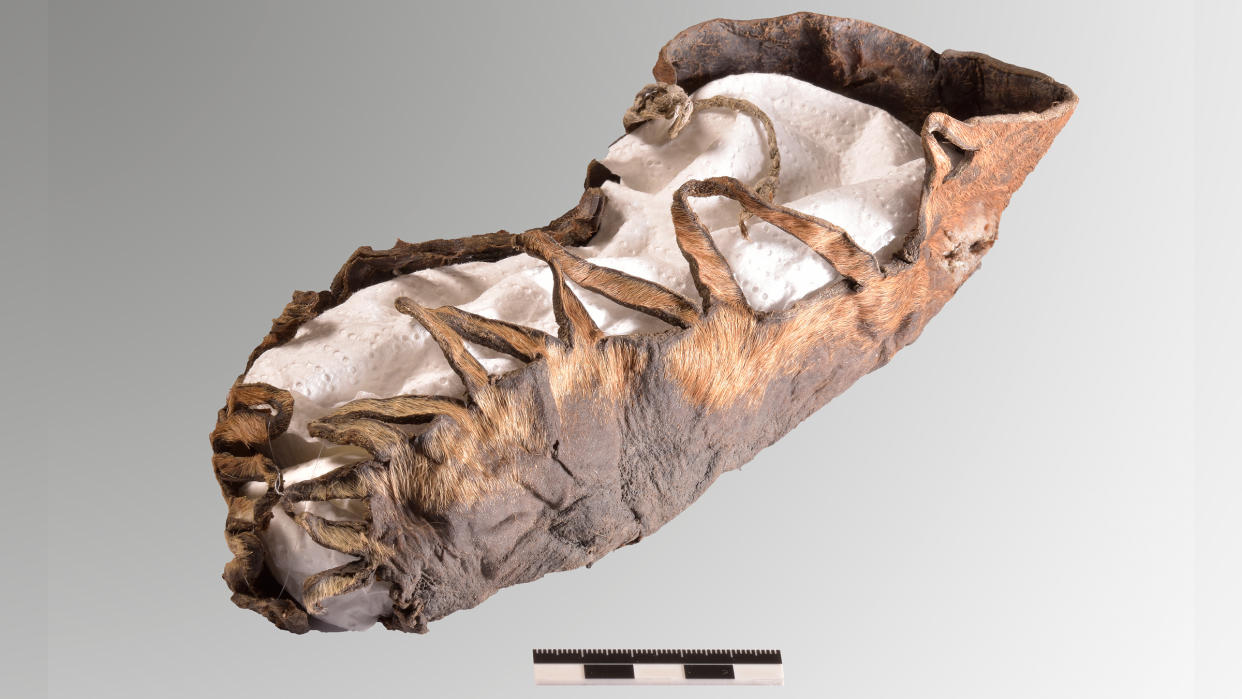'Outstanding' 2,200-year-old child's shoe discovered deep underground in Austrian mine

Deep underground in a rock-salt mine in Austria, archaeologists have made an "outstanding" discovery: the 2,200-year-old shoe of a child.
The mine's rock salt, which people have been mining since the Iron Age (800 B.C. to 1 B.C.) in the village of Dürrnberg near present-day Salzburg, preserved the well-crafted shoe, according to a translated statement from the German Mining Museum (DBM) in Bochum. The lone footwear is about a U.S. children's size 12 (European children's size 30).
"The condition of the shoe found is outstanding," Thomas Stöllner, the museum's research department head, said in the statement. "Organic materials generally decompose over time. Finds like this child's shoe … offer an extremely rare insight into the life of Iron Age miners."
Related: 1,700-year-old sandal found on a remote mountain in Norway
Archaeologists noticed that the leather shoe has a preserved remnant of lacing made from flax or linen, which hints at how the shoe was laced. The shoe's design indicates that the footgear was crafted in the second century B.C., according to the statement.
related stories
—Oldest shoe in Norway, dating to 3,000 years ago, recovered from melting ice patch
—Iron Age skis buried under ice reunited after 1,300 years apart
—Cave explorers discover a 19th-century mining scene preserved like a time capsule
While only one shoe was found, its discovery suggests that children were underground in the mines more than two millennia ago.
The museum has been carrying out archaeological work in the mine since 2001. Near the shoe, archaeologists found the fragment of a wooden shovel and the remnants of a fur with lacing, which may have belonged to a fur hood.
At the German Mining Museum, the public can go on tours to learn about hard coal, mining and mineral resources aboveground, as well as on a 0.7-mile-long (1.2 kilometers) underground route.

